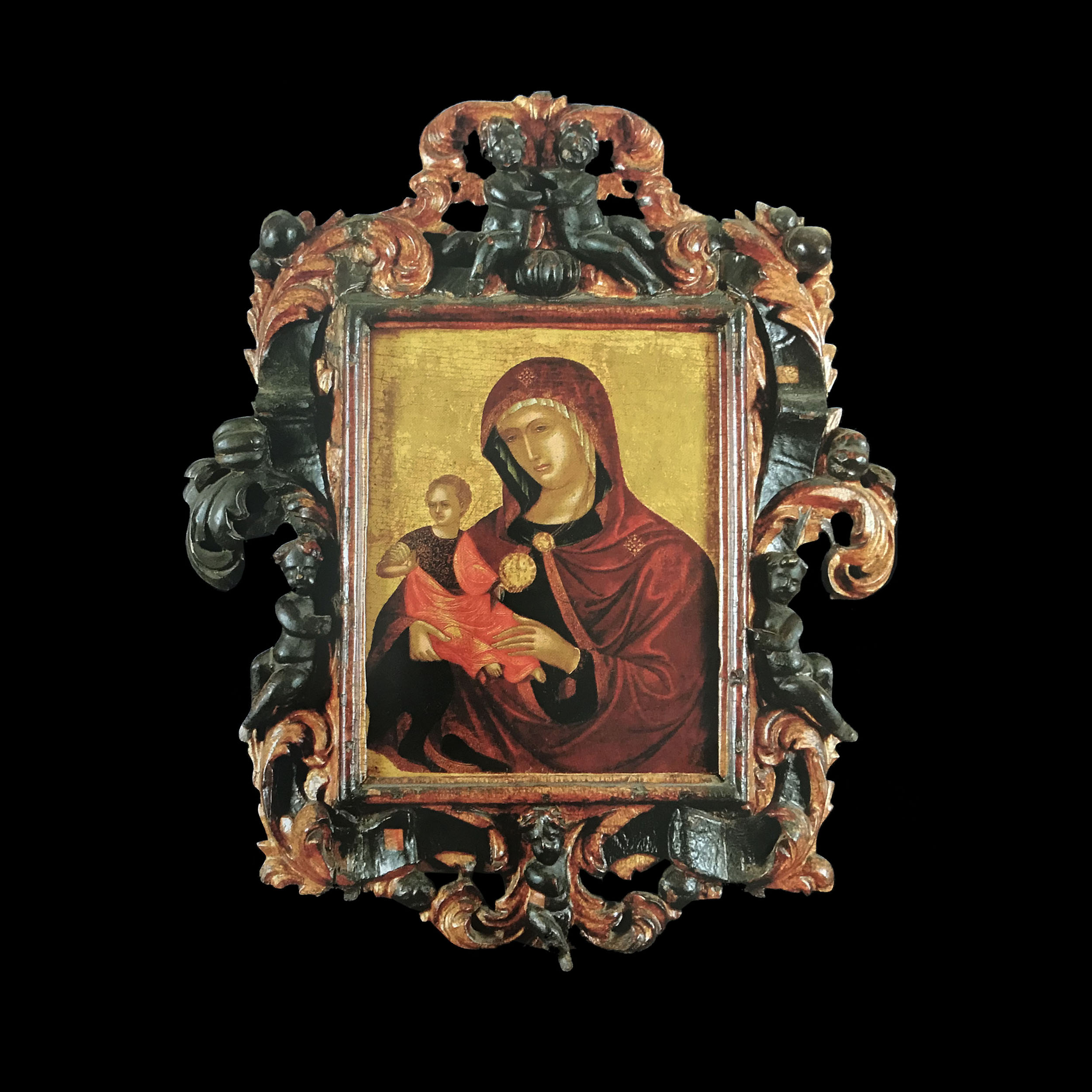

Icon depicting the Virgin, Madre della Consolazione
Represented against a gold ground is the Virgin to the waist, with the Christ Child on her right arm, in the familiar Italo-Cretan type of the Madre della Consolazione, which was crystallized in Crete in the second half of the fifteenth century. She wears a deep blue chiton and a dark red maphorion fastened in the Western manner, with a round gold brooch in front of the neck, which is exposed. The edge of the maphorion is trimmed with elaborate gold embroidery of pseudo-Kufic motifs, while on the forehead and the shoulders are the three gold stars (only two are visible) of Byzantine tradition, which symbolize the chastity of the Theotokos. Visible beneath the maphorion, around her head, is a flimsy diaphanous veil. The Virgin turns slightly towards the Christ Child, supported in her embrace, and places her left hand gently on his knee.
Christ turns his head towards his right hand, with which he blesses, while in his left he holds the gold globus cruciger of the world. Over his white chiton, discernible on the right arm, he wears a deep blue “chemise” of Western type, embroidered richly in gold, and an orange hima¬tion with gold striations.
This icon of superb art is distinguished by the nobility of its ethos and the refined sensitivity of its execution. Characteristics of the iconographic type are the fastening of the maphorion in the Western manner, the pseudo-Kufic gold embroidery around its edge, the contraposto pose in which the Christ Child sits, the gold globe he holds, his chemise of Western type and, primarily, the pronounced Late Gothic traits of the painting, such as the drapery of the maphorion, the diaphanous white veil and the almost slanting almond-shaped eyes of the Virgin.
The Baroque wood-carved frame seems to have been made in Venice or the Ionian Islands, especially for this icon. It has high-relief open-work decoration of scrolling leaves and fruits, with a ribbon passing between them. Five angels, almost sculpted in the round (two on the upper edge and one on each of the other sides), sit upon the stems. The ribbon, fruits and angels are black, whereas the leaves are gold.
PUBLICATION
Skampavias K. 2007. Catalogue no. 129, in Skampavias K.—Chatzidakis N. (eds), Paul and Alexandra Canellopoulos Museum.Byzantine and Post-Byzantine Art, Athens, 186-189.
